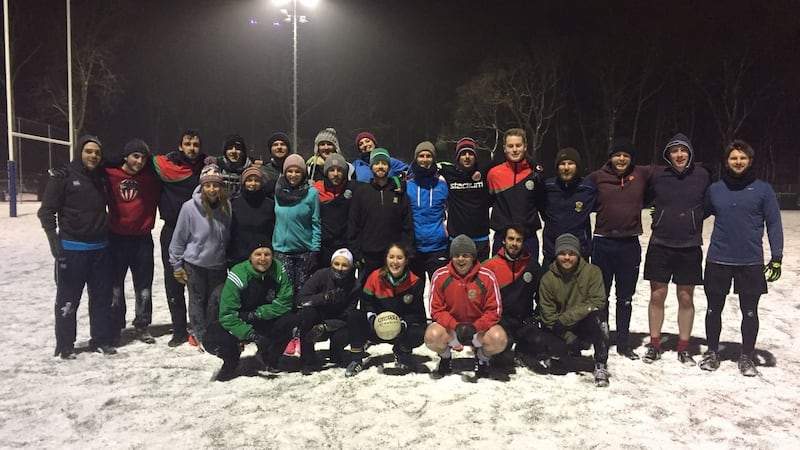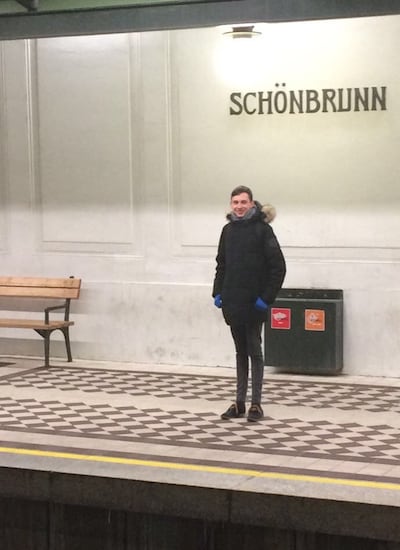Vienna is the "most liveable city" in the world, according to a new report published by the Economist Intelligence Unit. The Austrian capital dislodged Melbourne from the top spot after seven consecutive years. Dublin has risen from 43rd to 41st place this year, ahead of London (48) and New York (57).
Irish Times Abroad asked readers based in Vienna what they think - does their adoptive city deserve such an accolade? What makes it such a great place for them to live? And did the survey overlook any negatives?
Here’s what some had to say:
Simon Deignan: ‘The city is a real melting pot of cultures’
I’m from Dublin and live in Vienna with my wife Anita, and our soon-to-arrive first child (due in three weeks). I’ve been based here for eight years now and can definitely see why it has been chosen as “the most liveable city” in the world.
The public transport here is outstanding. It costs just €365 per year for a transport card that allows access on all buses, trams and metros. Most of the city is accessible within 30 minutes, meaning there is no need for long commutes in frustrating traffic. The city is also well-connected to other areas around Central Europe, meaning we can get to GAA tournaments easier!
Austrians take their recreation time seriously and there is a huge variety of things to do in Vienna in your free time. The large number of parks, rivers, water sports, beer gardens, vineyards and festivals offer great entertainment opportunities from spring to autumn, while in winter the city transforms with Christmas markets, ice rinks, and even a few ski slopes.

Approximately one in three Vienna residents are non-Austrian, making the city a real melting pot of cultures. This is great for our local GAA club, the Vienna Gaels (www.gaavienna.at) which is a home away from home for us. The club is the centre of the Irish social scene in Vienna, and we also travel around Europe throughout the year playing Gaelic football, hurling and handball.
Comhall Fanning: ‘I never found myself bored’
I am studying Sociology and German at Trinity College Dublin, and I took a gap year instead of doing Erasmus to work as an English language assistant in two secondary schools in Vienna.
In my view, Vienna is extremely “liveable”. There are five underground train lines, and an excellent tram and bus service. The underground usually comes every two to three minutes, and runs 24 hours at weekends. My monthly pass for the entire public transport network cost €31 by direct debit, compared to the €99.50 a month I have to spend in Dublin on a student Dart ticket.

Rent is extremely reasonable. Each district has a “fair rent” rate per square metre, and caps are in place. I rented a room in a newly-refurbished two-bedroom apartment for €380.
The healthcare system is fantastic. Everyone receives health insurance through their work, with payments based on your income. This entitles you to free GP care, and free hospital and consultants’ visits.
There is always some kind of festival or event on, be it an outdoor concert at the Museumsquartier or a food festival at Stadtpark, so I never found myself bored or stuck for something to do,
I loved the travel opportunities Vienna offered. Starting at €10 return, you could take a bus to Austria’s second-biggest city, Graz, or to the Czech Republic, Slovenia, Slovakia and more. I was constantly on the move.
Darren Gleeson: ‘There is no way I could afford the same apartment in Dublin’
Originally from Castlebar in Co Mayo, I came to Vienna in 2011. I currently work as a communications consultant at United Nations Headquarters in Vienna.
For me, Vienna is an amazing place full of history, impressive architecture and culture that is open to everyone. Public services are fantastic, particularly health and transport. Unlimited trips on Vienna’s comprehensive public transit system costs just €1 per day, making cars a luxury for many people.
It’s also very affordable compared with Dublin. Though many Viennese will tell you that a housing bubble is in train, rents are still generally much lower than in Ireland. I rent a small apartment alone, ten minutes’ walk from work; there is no way I could afford the same in Dublin.
Vienna is also ideally situated for those who wish to travel around Europe, being located along the former Iron Curtain. Much of Eastern Europe, Northern Italy and Southern Germany are accessible within a three to five hour drive.
Vienna also does a good job of blending commercial development and history; it’s first district seamlessly weaves together buildings from the Habsburg empirical era, with modern shopping centres and office blocks.
On the downside, Vienna is not quite as spontaneous or energetic as Dublin; you can have great fun here, but everything is quite carefully planned, from the Christmas markets to the autumn heurigen (sampling of this year’s wine at a vintner or tavern) to summer stage (open air stalls along the Danube). Locally, people are very protective of their peace and quiet, so you have to be careful not to make noise after 10pm, as the local Polizei are often called out for such infractions. It can also take a bit more time to interact with some Viennese, who often look askance at the charming Irish habit of engaging strangers in conversation.




















